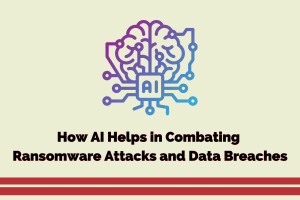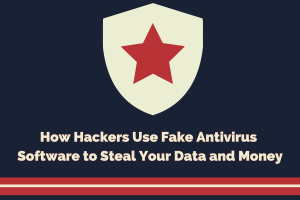What is a Cyber Attack?

Ever heard of cyber attacks? They’re like the sneaky villains of the digital world, launching calculated and downright devious attempts to mess with computer systems, networks, and digital secrets. Imagine hackers as the mischievous puppeteers pulling the strings to compromise everything from your Netflix account to big-shot government databases.
An attacker in a cyber assault might take data, damage systems, or even use a compromised machine to launch other attacks. There are several ways that hackers accomplish their goals, including malware, ransomware, phishing, and denial of service.
For the same group of people, you may hear the words “bad actors,” “danger actors,” “cybercriminals,” and whatever else you choose. The perpetrators of attacks might be individuals, small gangs, or even part of a larger criminal organization. They search for vulnerable, flawed or flawed computer systems to achieve their goals.
There is no one reason why cybercriminals may initiate an assault. For others, the motivation behind violent crime is the pursuit of material or social gain. Some people participate in activities supporting political or social objectives and call themselves “hacktivists.” Attacks like this might be orchestrated by terrorist organizations or launched by nation-states engaged in cyberwarfare.
Why do cyber attacks happen?
Cyber attacks happen for various reasons, and they can affect individuals, businesses, and even nations.
- Financial Gain: Criminals target data for fraud or extortion.
- Espionage: Governments and rivals seek strategic advantages through information gathering.
- Hacktivism: Individuals or groups advance political or social causes through digital means.
- Data Theft: Valuable information is pilfered for sale on cybercrime markets.
- Service Disruption: Hackers disrupt operations, causing chaos or financial loss.
- Ransomware: Data is encrypted, and a ransom is demanded for its release.
- Vulnerability Exploitation: Weaknesses in software are exploited for unauthorized access or damage.
- State-Sponsored Activities: Governments conduct cyber operations for political, economic, or military objectives.
- Thrill-Seeking: Individuals may launch attacks for personal satisfaction or challenge.
Several Types of Cyber Attacks
Malware
Malware is like the internet’s sneaky troublemaker. It creates serious problem on your computer, stealing your data, and generally causing digital mayhem.
Malware is the most common type of cyber attack. There are many kinds, like ransomware, trojans, spyware, viruses, worms, keyloggers, bots, cryptojacking, and other sneaky software that causes problems.
Types of Malware:
Phishing
Email, text message, phone, social media, and other channels are all part of a cyber attack known as “phishing,” which uses social engineering techniques to trick victims into giving over sensitive information like passwords and account numbers. A different tactic used by cybercriminals is to lure unsuspecting victims into downloading malicious files that may then infect their devices.
Imagine phishing is like a digital fishing scam. Cyber-criminals cast a wide net by sending emails or messages that seem legit, like from your bank or a friend. They’re trying to hook you into clicking on a link or sharing personal info.
- The Bait: You get a message that looks real, like a fisherman using a shiny lure to attract fish.
- The Hook: The message tricks you into clicking a link or giving away info, like a fish biting the tempting bait.
- The Catch: Once you take the bait, the cyber-fishermen reel in your sensitive info, just like catching a fish on a hook.
How to Avoid Getting Caught:
- Check the Sender: If the email seems fishy, check the sender’s details. Real companies won’t ask for sensitive info through email.
- Watch for Red Flags: Be cautious if the message creates urgency, has weird links, or feels off. Trust your instincts!
- Hover Over Links: Hover your mouse over links to see where they lead. If it’s not where you expect, don’t click.
Spoofing
Spoofing is like the high-tech version of wearing a disguise. Cyber criminals use it to pretend they’re someone else, aiming to fool you into thinking they’re legit when they’re really up to no good.
By implementing this method, the adversary may successfully engage with the target and infiltrate their systems or devices, aiming to steal information, extort money, or install harmful software or other damaging programs onto the device.
How Spoofing Works:
- Email Spoofing: Imagine someone putting on a mask to look like your friend. Spoofed emails mimic real ones, but the sender is a sneaky imposter.
- Caller ID Spoofing: It’s like a phone call with a secret identity. Scammers can make it look like they’re calling from a different number, maybe your bank or a government agency.
- Website Spoofing: This is when a website pretends to be another, like a copycat trying to steal the spotlight. You might think you’re on your bank’s site, but it’s actually a clever imposter.
How to Spot Spoofing:
- Check Email Addresses: Look closely at email addresses. Spoofed ones might have tiny tweaks or misspellings.
- Verify Calls: If someone asks for info over the phone, hang up and call the official number to check. Spoofed calls often sound fishy.
- Look at the URL: Before entering sensitive info on a website, check the URL. Spoofed sites may have subtle changes.
Just like in a game of pretend, the key is to be a good detective.
DoS Attacks (Denial-of-Service)
The purpose of a Denial-of-Service (DoS) attack is to cripple a company’s operations by overwhelming a network with malicious requests that don’t exist.
Amid a denial-of-service assault, users cannot access typical, essential services, such as email, websites, online accounts, and networks under the control of hackers. While denial-of-service (DoS) assaults often do not result in data loss and may be terminated without incurring any costs, they still require a substantial investment of time, money, and other resources to restore regular company operations.
The origin of the attack is what differentiates a Denial of Service (DoS) attack from a Distributed Denial of Service (DDoS) attack. DDoS attacks include several systems working together, unlike DoS attacks that use only one system. Denial-of-service attacks (DDoS) are more challenging to halt than denial-of-service (DOS) attacks because they involve identifying and neutralizing several systems.
Insider Threats
IT teams that recognize external rivals have a limited understanding of the challenge. Insider threats refer to individuals who are now or formerly employed by a firm and possess unrestricted access to the company’s network, confidential information, intellectual property (IP), and a deep understanding of the organization’s operations, policies, and other potentially valuable information that might be used in an attack.
The main threat to every organization is its internal malefactors. Data selling on the dark web may be used for financial gain, while business email compromise (BEC) assaults and pretexting techniques can influence individuals’ emotions.
Nevertheless, some individuals involved in insider threats lack caution or prudence. The most effective safeguard against many cyber threats, including internal ones, is a comprehensive cybersecurity training program that adequately trains all stakeholders.
How To Protect Against Cyber Attacks
Here are a few security measures that most companies use to protect themselves against cybercriminals. Technologies alone won’t keep hackers at bay; businesses also need in-house or contracted security professionals to oversee and use these technologies well.
Cloud Security
Most contemporary enterprises oversee their infrastructure, apps, and data in cloud-based environments. Cloud systems are particularly susceptible to cyber attacks due to frequent exposure to public networks and lack of visibility. It’s because they operate outside the corporate network and are characterized by high levels of dynamism.
Cloud providers assume the duty of protecting their infrastructure and providing integrated security solutions to assist cloud customers in safeguarding their data and applications.
Nevertheless, the capabilities of first-party cloud security technologies are restricted, and there is no assurance that they are being used correctly and that all cloud resources are indeed protected. Numerous firms use specialized cloud security solutions to guarantee the adequate protection of all sensitive assets in the cloud.
Database Security
Databases often store confidential and essential data, making them a primary focus for potential attackers. Securing databases includes fortifying servers, appropriately setting databases to allow access control and encryption, and vigilantly monitoring for hostile actions.
A uniform degree of database security throughout the company may be achieved with database security solutions. Database injection, unpatched vulnerabilities in database engines, unsecured sensitive data, and excessive privileges are all things that they may assist in avoiding.
API Security
Application programming interfaces (APIs) allow modern apps to exchange data and services with one another. Application programming interfaces (APIs) are becoming more popular for contacting and receiving data from third-party systems and integrating systems within an organization.
Attackers can potentially manipulate public Application Programming Interfaces (APIs) accessible online. APIs are vulnerable to manipulative attacks that use their structure and documentation. APIs with inadequate authentication are vulnerable to cross-site scripting (XSS) attacks, SQL injection, and man-in-the-middle (MitM).
Data encryption, authentication tokens, and secure multi-factor authentication (MFA) are necessary for API security. It is delivered while cleaning user inputs to secure against injection attacks. Centralized deployment and enforcement of these security measures is possible using API solutions.
Threat Intelligence
The threat intelligence system works in the background and supports various contemporary security products. When security personnel conduct investigations into occurrences, they also use it directly. The information in threat intelligence databases is organized and compiled from various sources. This information includes information on threat actors, attack strategies, techniques, processes, and vulnerabilities in computer systems.
Threat intelligence solutions collect data from numerous feeds and sources of information, enabling organizations to promptly identify indicators of compromise (IOCs), utilize them to detect attacks, comprehend the motives and methods of the threat actor, and develop an appropriate response.
Why is it important to prevent cyber attacks?
An effective cyber assault may result in significant data loss and the unauthorized acquisition of private, employee, and customer information. Cybercriminals use digital tools, including malware, botnets, and distributed denial-of-service (DDoS) assaults, to disrupt corporate operations. Restoring the functionality of compromised systems is a challenging task.
Recovering from a cyber attack requires substantial time, money, and effort; collaboration with the appropriate authorities may be necessary to resolve the issue and implement new systems that prevent future threats.
Reputational harm can be inflicted upon businesses that misplace consumer data or promptly neglect to notify them of a security violation. Organizations that rely on your company will also be affected if an assault occurs.
What are the most well-known cyber attacks?
Stuxnet (2010): A computer worm designed to target Iran’s nuclear program. Stuxnet was a sophisticated cyber weapon believed to be developed by state actors.
Sony Pictures Hack (2014): A cyber attack on Sony Pictures Entertainment, attributed to North Korea. It resulted in the leak of sensitive employee data, unreleased films, and internal communications.
Yahoo Data Breaches (2013-2016): Yahoo suffered two major data breaches, compromising billions of user accounts. The breaches, which were disclosed in 2016, had significant repercussions for the company.
Dyn DDoS Attack (2016): A distributed denial of service (DDoS) attack on Dyn, a domain name system (DNS) provider, disrupted internet services for several major websites, including Twitter, Reddit, and Netflix.
Target Data Breach (2013): Hackers gained access to Target’s computer systems, compromising credit and debit card information of around 40 million customers and personal details of up to 70 million individuals.
OPM Data Breach (2015): The U.S. Office of Personnel Management (OPM) suffered a significant data breach, exposing sensitive information, including security clearance details, of millions of current and former federal employees.
SWIFT Banking Attacks (2016): Cybercriminals targeted the SWIFT banking system, using malware to steal funds from various banks worldwide. Notable incidents include attacks on the Bangladesh Bank and Ecuador’s Banco del Austro.
Ashley Madison Data Breach (2015): The hacking of the Ashley Madison website, known for facilitating extramarital affairs, resulted in the exposure of user data, including personal information and account details.
Riviera Beach and Lake City Ransomware Attacks (2019): Both Florida cities fell victim to ransomware attacks, paying substantial sums to regain control of their computer systems. These incidents underscored the impact of ransomware on local government operations.
WannaCry Ransomware (2017): This global ransomware attack affected hundreds of thousands of computers in over 150 countries. It exploited a Microsoft Windows vulnerability.
NotPetya (2017): Initially thought to be ransomware, NotPetya was later attributed to a cyber-espionage campaign. It caused widespread disruption, particularly in Ukraine, affecting businesses globally.
Equifax Data Breach (2017): One of the largest data breaches in history, impacting the credit reporting agency Equifax. Personal information of millions of consumers was exposed.
SolarWinds Supply Chain Attack (2020): A highly sophisticated attack attributed to state-sponsored actors, which compromised the software supply chain, affecting numerous organizations, including government agencies and major corporations.
Colonial Pipeline Ransomware Attack (2021): A ransomware attack on a major U.S. fuel pipeline, leading to disruptions in fuel supply and highlighting the impact of cyber attacks on critical infrastructure.
Microsoft Exchange Server Hafnium Attacks (2021): Exploiting vulnerabilities in Microsoft Exchange Servers, these attacks targeted email systems globally, affecting organizations and government agencies.
JBS Meat Processing Cyberattack (2021): A ransomware attack on JBS, one of the world’s largest meat processing companies, leading to disruptions in meat production and supply chains.
Kaseya Supply Chain Ransomware Attack (2021): A supply chain attack that targeted the software provider Kaseya, affecting numerous managed service providers (MSPs) and their clients.
Log4Shell (2021): A critical vulnerability in the Apache Log4j library that impacted a wide range of applications and systems, leading to widespread security concerns and a large-scale patching effort.
Final Thoughts
In the era of technological advances, a cyber attack is more than just a catchphrase—it’s a real threat. By understanding its components and decisive actions, we may safely cross the digital landscape, ensuring our online experiences’ safety and enjoyment.
Moreover, having the best cybersecurity software is crucial to be more secure on several possible attacks. So, be cautious and knowledgeable!






